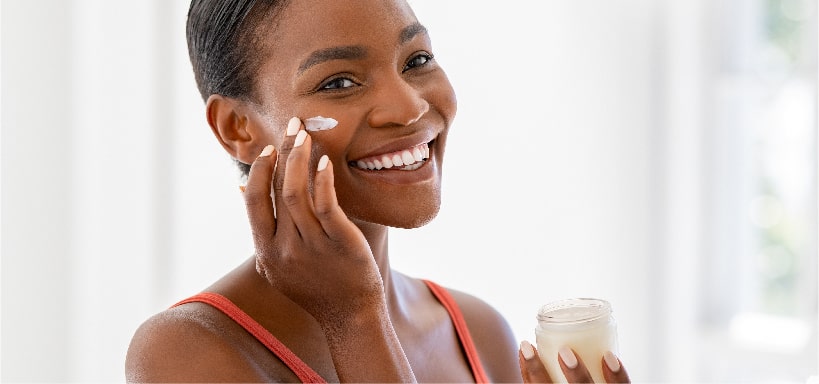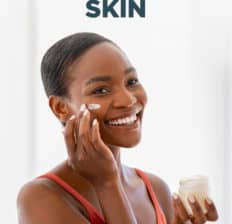This Dr. Axe content is medically reviewed or fact checked to ensure factually accurate information.
With strict editorial sourcing guidelines, we only link to academic research institutions, reputable media sites and, when research is available, medically peer-reviewed studies. Note that the numbers in parentheses (1, 2, etc.) are clickable links to these studies.
The information in our articles is NOT intended to replace a one-on-one relationship with a qualified health care professional and is not intended as medical advice.
This article is based on scientific evidence, written by experts and fact checked by our trained editorial staff. Note that the numbers in parentheses (1, 2, etc.) are clickable links to medically peer-reviewed studies.
Our team includes licensed nutritionists and dietitians, certified health education specialists, as well as certified strength and conditioning specialists, personal trainers and corrective exercise specialists. Our team aims to be not only thorough with its research, but also objective and unbiased.
The information in our articles is NOT intended to replace a one-on-one relationship with a qualified health care professional and is not intended as medical advice.
Combination Skin: What It Is, How to Tell If You Have It & Best Skin Care Routine
April 2, 2022

According to dermatologists, people tend to have a predetermined skin type based mostly on genetics but also lifestyle factors. What are the four types of skin? These include normal, dry, oily and combination skin (plus sensitive skin, considered by some to be the fifth type).
Dry and oily skin are pretty obvious, but how do I know if I have combination skin? Signs include having areas of dry skin, plus others that are prone to breakouts and oiliness.
Below we’ll look at the best products for skin that’s in need of both hydration and oil control — including the best moisturizer for combination skin, makeup tips and more.
What Is Combination Skin?
Combination skin is skin that can be both oily and dry, depending on the part of the face/body. Most often it shows up as dryness around the cheeks and hairline but oiliness around the “T-zone,” which comprises the forehead, nose and chin.
What does combination skin look like? Here are signs that this is likely your skin type:
- If you use the same products on your entire face, some parts feel oilier or drier than others.
- You tend to have areas of your face that are oily within about an hour of washing your face, such as your nose or forehead. They may appear shiny or break out more often.
- You have visible, larger pores on your nose or another area.
- Parts of your skin always seem to require moisturizer, since they are dry or flaky.
- You experience dry, flaky patches on your scalp (aka dandruff).
What’s the underlying cause of combination skin?
Genetics seem to play the biggest role in causing this type of skin. However, the types of products you apply to your face, plus factors like your diet, hygiene, the climate you live in, sun exposure and mediation use can also affect your skin.
If you tend to use harsh, drying products on your skin often, such as acne treatments and some types of clay masks that absorb oil, you may develop dryness. Some people even experience redness, irritation and peeling from certain skin care products if they have sensitive skin — especially those with ingredients like sodium laureth sulfate, lauryl sulfate, salicylic acid and retinoids (although these last two can be helpful or acne).
On the other hand, not washing your face enough and removing makeup can result in oiliness. Sometimes hormonal imbalances, such as increased androgen levels, can also increase oil production (and hormonal acne) on the face.
Related: Mandelic Acid Benefits for Skin Cell Turnover and Acne Reduction
Skin Care Routine for Combination Skin
Taking care of combination skin requires some thought and effort. For example, you may need to use different products on different parts of your face to keep things in balance.
Best Products:
- Cleanser — Use a gentle cleanser both in the morning and before bed at night. After washing your face, exfoliate your face gently several times per week, especially your T-zone, which tends to be oilier. You can also use a Clarisonic cleansing brush to help remove dead skin cells from your T-zone that can cause clogged pores. Be careful about over-washing your entire face with harsh cleansers, since this can leave your skin tight and dehydrated.
- Toner — Use a facial toner, such as one with witch hazel or rose water, to help even things out. Don’t overdo this step — simply use a bit once daily.
- Moisturizer — The best moisturizer for combination skin is one that combines clarifying and mattifying ingredients (like salicylic acid and silica if you tolerate them well) with hydrating ingredients (such as hyaluronic acid and glycerin).
Try this moisturizer for oily skin on parts of your face that have larger pores and more shine. You might also have the best results by using two different moisturizers, such as an emollient one on dry skin and lighter, oil-free gel on oilier skin.
You can also experiment with facial oils, such as marula or coconut oil, topped with thicker creams on dry areas.
- Masks – Because your skin is not uniform in terms of its needs, it’s best to apply two different facial masks. Apply a moisturizing mask to dry areas and one that absorbs oil and cleanses pores to oily areas (such as one with bentonite clay). Use facial masks about two to three times per week, but be careful about using drying masks more to avoid irritation.
- Serums and other treatments — As long as you don’t have very sensitive skin, you can benefit from using products containing facial acids, such as alpha hydroxy acid or beta hydroxy acid. These help exfoliate skin and keep pores clean — plus they allow other ingredients to penetrate your skin more easily.
- Makeup —The best foundation for combination skin is one that is not too oily or thick. Let your moisturizer first settle in to the skin for several minutes, and then apply a lightweight foundation. You may also want to use skin primer if this helps with coverage on dry areas.
Use “leave-on exfoliant” facial acids several times per week in most cases.
If you prefer natural skin care and want to make your own serums or lotions at home, beneficial essential oils for skin to us in DIY recipes include lavender oil on dry/irritated areas and tea tree oil on oily areas. Other beneficial ingredients for combination skin include vitamin C, niacinamide and retinoids (if tolerated well).
Combination Skin Care Routine Tips:
- When applying products, always put them on clean skin. Use the thinnest products first, including serums, and then finish with the thickest.
- When cleaning your skin, first exfoliate and then tone. Dry brushing occasionally is an excellent natural exfoliator and can help draw toxins from your skin’s pores. Then apply your thin serums and/or leave-on exfoliants (such as facial acids). Follow up with moisturizer and eye cream, then sunscreen.
Related: Succinic Acid Benefits for Skin + How to Use It
Potential Side Effects and Things to Avoid
What should combination skin types avoid? The biggest thing to remember is that some products won’t work on your entire face so you probably don’t want to use very thick, hydrating creams on acne-prone areas and only light lotion on dry areas.
Be careful about how acne treatments, masks and other concentrated products, such as retinoids, affect sensitive parts of your skin. Use them about every other day to avoid redness and dryness.
In general, skip any product with skin-aggravating ingredients like fragrances and alcohol.
If you have signs of dermatitis or rosacea, including red patches, peeling and itching, then visit a dermatologist, who may prescribe antifungal, anti-yeast or anti-inflammatory creams depending on your needs.
Conclusion
- Combination skin is the type that has both oily skin areas and dry areas.
- Most often, the T-zone (forehead, nose and chin) is more oily and acne-prone, while the sides of the face and cheeks are drier.
- What products are best for combination skin? The best moisturizer for combination skin is one that combines mattifying and hydrating ingredients. You may also need to use more than one type to achieve a balanced skin texture.
- Combination skin should be cleansed gently twice daily and then ideally exfoliated and toned. Helpful products can include facial acids like AHA and BHA, hyaluronic acid, vitamin C, niacinamide, and emollient creams for very dry areas.



Comments
Please keep comments under 200 characters.